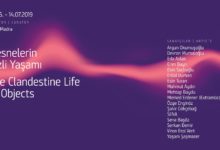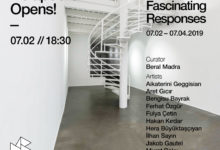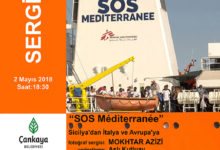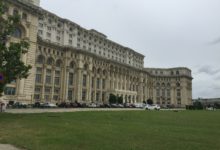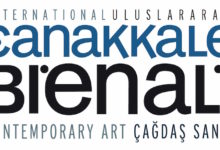DÜŞÜNME İKONLARI: İMGELER VE METİNLERMÜZE EVLİYAGİL KOLEKSİYONU
17.03.2018-30.12.2018
AÇILIŞ: 17 Mart 2018 Cumartesi
KÜRATÖR BERAL MADRA
BEDRİ RAHMİ EYÜBOĞLU, FERRUH BAŞAĞA, SELİM TURAN, NEJAD DEVRİM, MÜBİN ORHON, YÜKSEL ARSLAN, BURHAN DOĞANÇAY, SEYHUN TOPUZ, OSMAN DİNÇ, KEMAL ÖNSOY, CANAN TOLON, İNCİ EVİNER, MİTHAT ŞEN, KEMAL SEYHAN, EKREM YALÇINDAĞ, GÜNNUR ÖZSOY, EBRU DÖŞEKÇİ, NERMİN ER, HALUK AKAKÇE, EVREN TEKİNOKTAY, EBRU UYGUN, SEÇKİN PİRİM, CAN AKGÜMÜŞ
Müze Evliyagil, küratörlüğünü Beral Madra’ nın üstlendiği “Düşünme İkonları: İmgeler ve Metinler”sergisini ağırlamaya hazırlanıyor. Sergi, Müze Evliyagil Koleksiyonundanbir araya gelen 23 sanatçının üretimleriyle beraber sunulan metinler eşliğinde sanat severleri düşünmeye davet ediyor. “Düşünme İkonları: İmgeler ve Metinler” 17.03.2018-30.12.2018 tarihleri arasında Müze Evliyagil’ de görülebilir.
Türkiye’nin Modernist, Post-modernist ve İlişkisel Estetik görsel üretim süreçleri bulunduğu bölge açısından özgün ve benzersizdir. Çağdaş sanat alanında üretim yapan sanatçılar siyasal, ekonomik, kültürel çetin değişimleri göğüsleyerek, Modernist ve Post-modernist aşamalardan geçerek günümüze özgü teknik ve biçimlerde resim, fotoğraf, üçboyutlu yapıtlar ürettiler.
Bu üretim sanatçıların atölyelerinde, galerilerde ve koleksiyonlarda korunan zengin bir birikim oluşturuyor. Bu üretimi değerlendirerek korumayı üstlenen Evliyagil Müzesi Koleksiyonundan seçilmiş̧ yapıtlarla oluşturulan bu sergi, epistemolojik krize karşı savunma ve direnme seçeneği olarak düşünme eylemi ile sanat üretimi arasındaki ilişkiye odaklanıyor. Koleksiyondan özellikle soyut sanat olarak değerlendirilen yapıtlar seçildi. Bu yapıtlara eşit biçimde hazırlanacak metin levhaları eşlik ediyor. Bu seçim, Rudolph Arnheim’ ın “Düşünme imgeleri gerektirir, imgeler de düşünce içerir. Bu yüzden görsel sanatlar görsel düşünmenin yuvasıdır.” sözlerinden kaynaklanıyor.
Koleksiyonda yer alan, özellikle 1940-1970 arasında soyut resimleri ile Türkiye Modernizmini simgeselliğe, tinselliğe ve düşünselliğe yönlendiren ve hayatta olmayan sanatçıların resimleri için aynı dönemde bu tür resmin oluşumunu etkileyen felsefeciler ve düşünürlerden metinler seçildi. Post-modern süreçte uluslararası düşünce sistemleriyle etkileşimi giren iki kuşak sanatçı ise koleksiyondaki resimleri için kendi düşüncelerini yansıtan metinleri sunmaya davet ediliyor.
Sanatçıların yasadıkları dönemlerin siyasal, ekonomik, toplumsal koşulları içinde farklı görüşler, amaçlar ve tekniklerle üretilmiş olan bu resimler arasındaki temel bağlantı da bütün sistem olumsuzluklarına karsın özgür düşüncenin varlığıdır. Sanat yapmak, düşünme süreci, düşüncenin üretim sürecine dönüşme aşamaları ve üretimin görsel sonucu olarak tanımlanırsa, sanatçılar için bu süreçlerin hangisi daha önemlidir diye sorulduğunda, yanıtın düşünme süreci olması temel değerlendirme açısıdır. Düşünme sürecinin işlevi, sanatçının mevcut düzen aşamalarındaki duruşunu da belirler. Dolayısıyla, yapıtların oluşturduğu görsel metaforlar dünyasının tanımlanmasında iki önemli öge sanat yapıtının düşünsel süreci ve sanatçının bu düşünme süreci bağlamında duruşu birbirini tamamlayıcıdır. Sanat yapıtı bu açıdan bakıldığında bir sonsal ürün değil, düşünmenin aşamalarına bağlı değişken üretimdir. Alain Badiou da bu durumu şöyle açıklıyor: Düşüncenin sanatın şu hali ile ilişkisi bir betimleme ilişkisi değil, belli yerlerde yoğunlaşmış bir kural koyma ilişkisidir. Her şey kişinin özenel olarak konumlanmış olduğu noktaya ve verilen yargıları desteklemek için kullanılan aksiyomlara bağlıdır.
Soyut resimlerin temelindeki ifade özgürlüğü sanatçı için olduğu kadar izleyici için de geçerlidir; izleyicinin soyut resmi algılama becerisi ve isteği bu özgürlüğün ifadesidir. Bu birleşmede sanatçı ve izleyici açısından yaşanan düzen ve koşullar içinde oluşan düşüncenin dışavurumu isteği ile özgürlük isteği örtüşüyor ve bu örtüşen istek soyut resmin yansıttığı gizem, zihinsel tetikleme ve duygusal yoğunlukla bütünleşiyor.
ICONS OF THINKİNG: IMAGES AND TEXTS
THE PRIVATE COLLECTION OF EVLIYAGIL MUSEUM
17.03.2018-30.12.2018
Opens at 17 March 2018
KÜRATÖR: BERAL MADRA
BEDRİ RAHMİ EYÜBOĞLU, FERRUH BAŞAĞA, SELİM TURAN, NEJAD DEVRİM, MÜBİN ORHON, YÜKSEL ARSLAN, BURHAN DOĞANÇAY, SEYHUN TOPUZ, OSMAN DİNÇ, KEMAL ÖNSOY, CANAN TOLON, İNCİ EVİNER, MİTHAT ŞEN, KEMAL SEYHAN, EKREM YALÇINDAĞ, GÜNNUR ÖZSOY, EBRU DÖŞEKÇİ, NERMİN ER, HALUK AKAKÇE, EVREN TEKİNOKTAY, EBRU UYGUN, SEÇKİN PİRİM, CAN AKGÜMÜŞ
Evliyagil Museum is now preparing the exhibition “Icons of Thinking: Images and Texts”, curated by Beral Madra. The exhibition brings 23 different artists, all from the Evliyagil Museum Collection, and invites viewers to think about these artworks together with matching texts. “Icons of Thinking: Images and Texts”can be seen between 17.03.2018-30.12.2018 at Evliyagil Museum.
The production processes of Modernist, Post-Modernist and Relational Aesthetics of Turkey is authentic and unique in terms of its geographical location. The artists who had been producing in the field of Contemporary Art had endured the drastic changes in politics, economics, culture and passed Modernist and Post-Modernist stages to produce paintings, photographs and three-dimensional works.
These productions create a rich accumulation that is preserved in artists’ studios, art galleries and in private collections. This exhibition, which is designed with the art pieces chosen within Evliyagil Museum Collection and which is aimed to utilize and preserve these productions, is focused on the relation between the act of thinking and art production as the options of defence and resistance against an epistemological crisis. Especially the pieces within the frame of “abstract art” have chosen from the Collection. Sheets of texts that are prepared in the same size accompany the artworks. This chooses is based on a quotation from Rudolph Arnheim; “Thinking calls for images, and images contain thought. Therefore, the visual arts are a home ground of visual thinking.” (Visual Thinking)
Texts from philosophers and thinkers who had influenced the formation of art have chosen for the artworks in the collection, especially for the ones between 1940-1970 that leads Turkish Modernism into figurativeness, spirituality and intellectuality and for the ones whose artists are already deceased. Two generations of artists whose international way of thinking has interacted in the Post-modern process are invited to propose texts that reflect their own thoughts.
The main connection between these artworks, produced with different views, aims and techniques by artists within the political, economical and social conditions they live in, is the existence of free thought against all the negativities of the system. If the making or art is to be defined as thought process, the transformation of thoughts into production, and finally the visual outcome, then when the artists are asked which one of these processes is more important, the answer should be the though process, which is essential for art’s evolution. The function of the process of thinking determines the attitude of the artist towards present stages of the system. Therefore, the two factors which are important in defining the artwork’s world of visual metaphor, namely, the though process that goes into the making of art, and the artist’s position with regards to this process, are complementary elements.
The freedom of thought in the root of abstract art is valid not only for the artist but also for the viewer; viewer’s ability and will of perceiving abstract art is the expression of this freedom. The will of expression which is formed within the orders and conditions, experienced by both the artists and the viewers, and the will of freedom corresponds each other in this union, and this corresponding desire becomes integrated with the mystery, intellectual triggering and emotional intensity that abstract art reflects.

